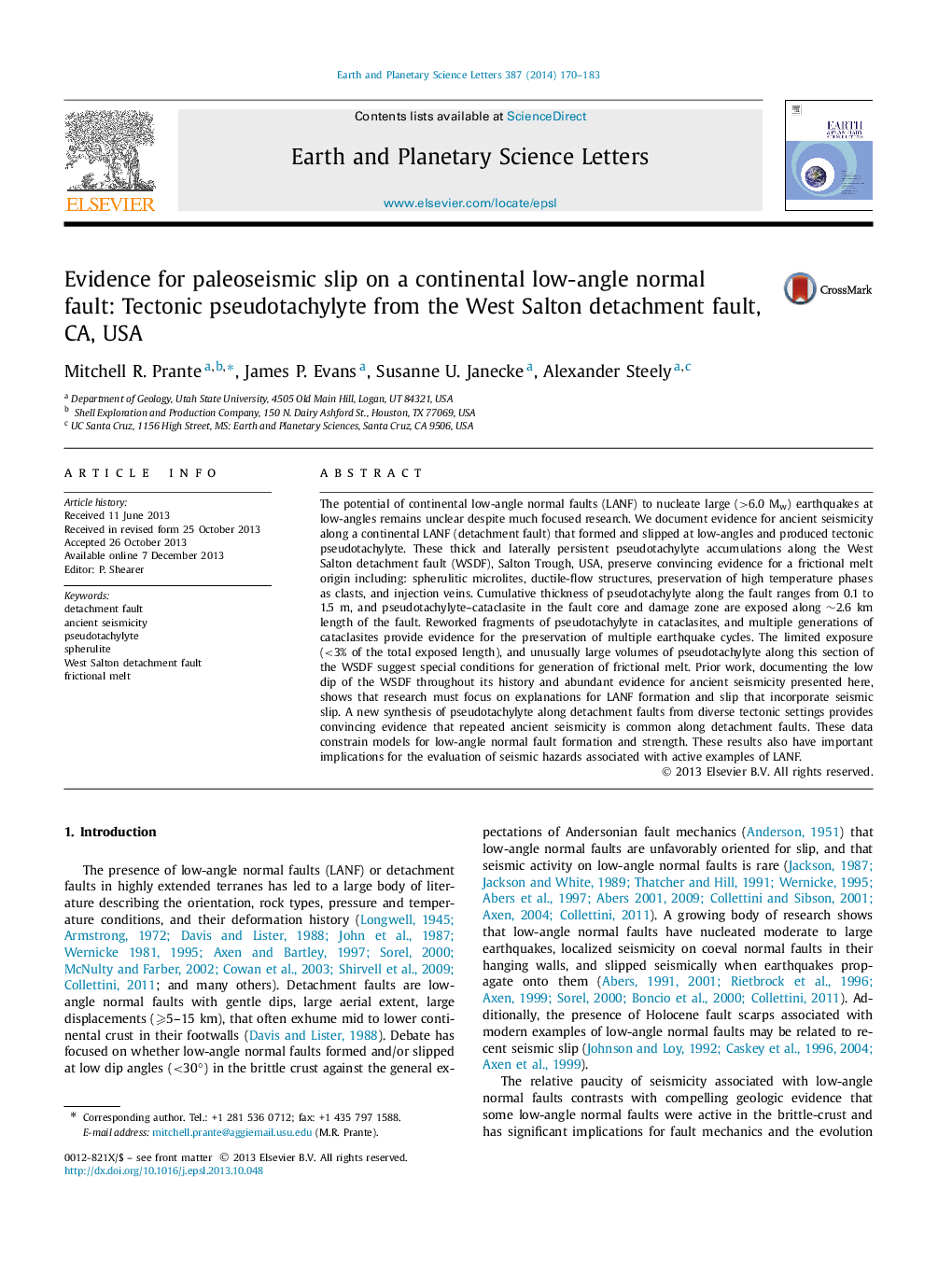| Article ID | Journal | Published Year | Pages | File Type |
|---|---|---|---|---|
| 6429656 | Earth and Planetary Science Letters | 2014 | 14 Pages |
â¢Evidence for repeated ancient seismicity along a continental low-angle normal fault.â¢Thick (>1.0 m) accumulations of tectonic pseudotachylyte.â¢Pseudotachylyte formed in the shallow-crust with little fluid involvement.â¢Seismic slip occurs during low-angle normal fault evolution.
The potential of continental low-angle normal faults (LANF) to nucleate large (>6.0 Mw) earthquakes at low-angles remains unclear despite much focused research. We document evidence for ancient seismicity along a continental LANF (detachment fault) that formed and slipped at low-angles and produced tectonic pseudotachylyte. These thick and laterally persistent pseudotachylyte accumulations along the West Salton detachment fault (WSDF), Salton Trough, USA, preserve convincing evidence for a frictional melt origin including: spherulitic microlites, ductile-flow structures, preservation of high temperature phases as clasts, and injection veins. Cumulative thickness of pseudotachylyte along the fault ranges from 0.1 to 1.5 m, and pseudotachylyte-cataclasite in the fault core and damage zone are exposed along â¼2.6 km length of the fault. Reworked fragments of pseudotachylyte in cataclasites, and multiple generations of cataclasites provide evidence for the preservation of multiple earthquake cycles. The limited exposure (<3% of the total exposed length), and unusually large volumes of pseudotachylyte along this section of the WSDF suggest special conditions for generation of frictional melt. Prior work, documenting the low dip of the WSDF throughout its history and abundant evidence for ancient seismicity presented here, shows that research must focus on explanations for LANF formation and slip that incorporate seismic slip. A new synthesis of pseudotachylyte along detachment faults from diverse tectonic settings provides convincing evidence that repeated ancient seismicity is common along detachment faults. These data constrain models for low-angle normal fault formation and strength. These results also have important implications for the evaluation of seismic hazards associated with active examples of LANF.
Graphical abstractDownload high-res image (176KB)Download full-size image
